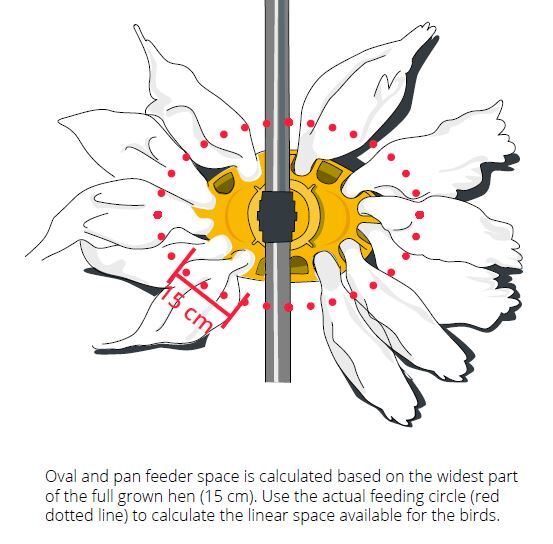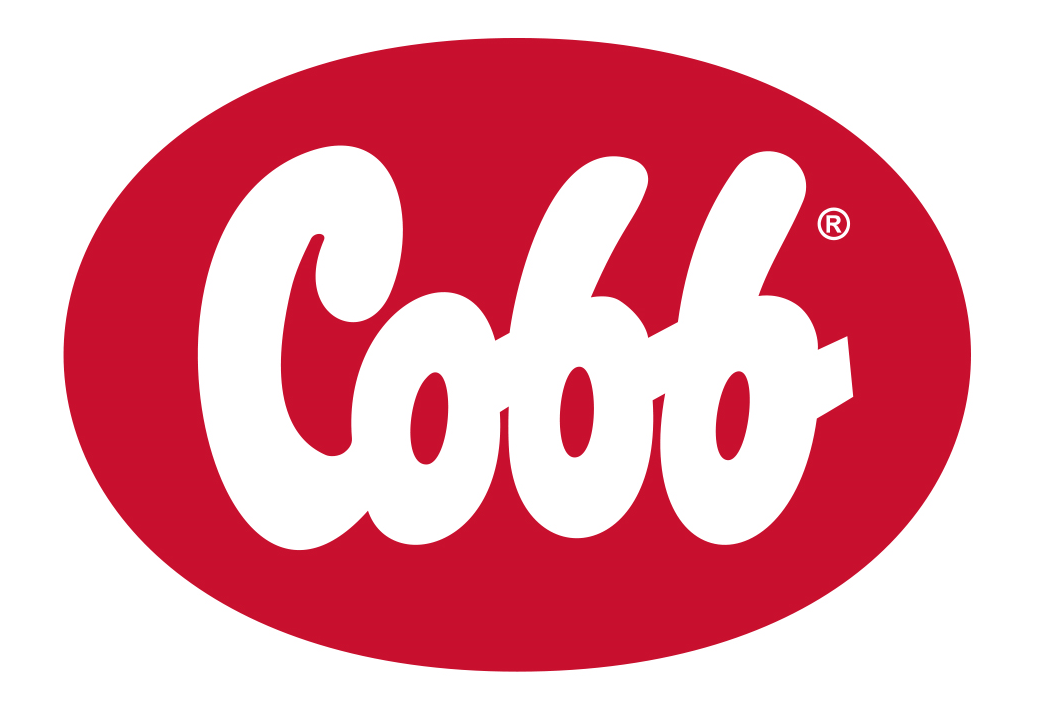



Cobb Breeding Management Guide: Phase 1 - Brooding: 0 to 4 weeks
Learn more about early feeding, feeder space requirements and uniformityEditor's note: This article is an excerpt from the Cobb Breeder Management Guide and additional articles will follow. The Guide was designed to highlight critical factors that are most likely to influence flock performance. The management recommendations discussed were developed specifically for Cobb products. The recommendations are intended as a reference and supplement to your own flock management skills so that you can apply your knowledge and judgement to obtain consistently good results with the Cobb family of products. To read or download the complete Guide or to view Cobb's other management guides, click here.
Early feed management
The purpose of the brooding phase is to condition the chicks to manage growth. The parent stock broiler breeder originates from populations selected for desirable broiler traits that include average daily gain (ADG) and feed conversion (FCR) both of which are negatively associated with reproductive efficiency. In order to address this propensity to grow, birds must be managed to a defined growth curve established by Cobb. This growth curve varies based on breed and sex.
Average bodyweight is an important metric and deviation from the standard can be caused by low water and / or feed consumption. Flock uniformity is another important metric critical for developing a flock that will consistently respond to feed changes at later ages.
Troubleshooting early weight gain and uniformity issues
Primary reason for low early weight gain issue is low water consumption:
- Water temperature too hot
- Water line too high
- Wrong nipples for starting chicks (must be 360 degree)
- Water pressure too high
- Nipple pins stuck or clogged with debris
- Dirty water (insufficient flushing of water lines
Secondary reason for low early weight gain issue is low feed consumption:
- Conduct crop checks
- Evaluate feed condition, quality and form (crumble or micro pellet)
- Check feed availability - feeder space and access

Controlled feeding
Controlled feeding is necessary to prevent birds from exceeding the bodyweight standard. This is especially important for females from 4 weeks of age to the end of the rearing period. Following the recommended bodyweight standards during the first 4 weeks is important for frame size and uniformity development for males and females.
During the first month of growth the chick experiences rapid development of organs that support the healthy maturation of the breeder hen. Organs include those associated with neurological, immune, gastrointestinal, cardiovascular, pulmonary and skeletal systems. Prevent extended time periods below bodyweight standard which will compromise the normal development of the organs and lead to issues later in the life of the flock.
Over or under bodyweight standards are detrimental to mature breeder performance. Controlled feeding is therefore recommended immediately after placement. Ad-libitum feeding is not recommended during the first week because it is difficult to determine feed amounts that the flock consumed and can waste feed.
Preventing feed wastage in the litter is important so that birds will not eat this feed at a later age and gain weight unexpectedly. Instead, use specific amounts of feed with small incremental changes each day during the first week as shown in the table. By feeding a designated amount of feed each day, the bodyweight of the females and males should be on target by 4 weeks of age.
- Female feed can be set at 29 g from day 8 to 14.
- Male feed can be set at 32 g from day 8 to 14.
- Daily feed allocation should be based on experience and managing weights to achieve Cobb standard bodyweight at 14 days.
Feeder space recommendations
Beginning at placement, a progressive feed space plan can be used to configure the system for the correct number of birds per pan or chain length at different ages, and to obtain good feed and bird distribution. Feeder space increases should be gradual and based on bird age and the amount of feed needed to cover the entire feed track. See tables on the proceeding page for feed space requirements based on flock age and sex.
It is typical for houses to have up to 4 chain feeder loops, however, because of the volume of feed being delivered in relation to bird age use the following recommendations. Distribute the daily feed allocation across 2 loops from 0 to 5 weeks of age. Extend the feeding track to 3 loops from 5 to 11 weeks and all 4 loops from 12 to 20 weeks.
Feeder space calculations are based upon the average length and width of a full grown female, 30 and 15 cm, respectively. Using a chain feeder as an example, 1.5 meters will accommodate 10 birds on one side of the feeder. With a pan or oval feeder, the widest part of the bird is actually 10 cm away from the feeder ((30 cm + (10 cm X 2) = 50 cm; see diagram below). Therefore, to determine the feeding space, calculate the circumference of the actual feeding circle using the formula 2πr = (2 X π X 25) = 157 cm.
For feeder space between lines, a minimum of 60 cm is required, which is the length of 2 birds tail to tail. However, there is no room for birds to pass between the feeders. Therefore, by placing feeders 75 cm apart, one bird can pass and by placing feeders 90 cm apart, two birds going in opposite directions can pass between the feed lines.



Inexpensive methods for improving feed distribution
- Supplemental hoppers can be added to the system to increase points of feed distribution.
- Additional lines of feeders or loops in the chain system can be added.
- Condition the birds to associate feed a specific signal such as signal lighting or the sound of the feeder. This process will allow birds to spread out with enough access to the feeder. For example, turning off the lights prior to and during feed distribution will train the birds to expect feeding after this signal. Entering the house after distribution in the dark will not trigger a lot of movement of the birds and reduce stress.

Monitoring bodyweights and uniformity
Establishing flock uniformity requires the collection of accurate weight data using consistent sampling methods. The goal is to weigh enough birds to accurately represent average bodyweight of the flock. Birds should be individually weighed at placement and 7 and 14 days. To expedite chick placement, chicks can be bulk weighed. If bulk weighing, use a platform electronic scale with enough surface space to weigh a group of 5 to 10 chicks. Keep group size consistent to prevent miscounting the chicks. It is important that no less than 2 % of the flock be weighed in order to correctly estimate average bodyweight and calculate flock uniformity.
Once the flock reaches 3 weeks of age, it is recommended to increase the sample size to 3 to 5 % of the population. Weigh birds from three different locations (front, middle, back) of each house to make the sample more representative of the flock.
To increase accuracy of the sampling, use a catching pen, do not randomly pick up and weigh birds, and do not force birds into the pen. Forcing birds into the pen or selectively catching birds and placing them in a pen can result in a non-representative flock sample for weighing. Instead, the catch frame should be placed to allow the birds to freely enter the pen for a more representative sample of the flock. Weigh every bird individually inside the catch pen, including small birds, and do not reject any weights, except for sexing errors. After each bird is weighed, release the bird into the house. Continue weighing until the pen is empty. Record each weight and calculate the average weight as well as the flock weight distribution.









